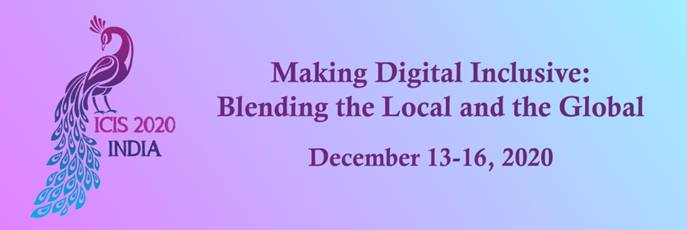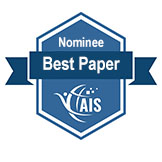Advances in Research Methods
Loading...
Paper Type
Complete
Paper Number
1323
Description
In dynamic data environments, we often lack sufficient information to adjust prediction models in a timely manner. In this study, we investigate whether and how we can use transfer learning (i.e., training a model using large but potentially less relevant data sets consisting of both historical and recent source data) when there is only a small amount of source data that exhibits the target data pattern. We provide theoretical insights on when and to what extent transfer learning works by using a sample selection perspective to represent changes. We conduct simulation analyses to examine two practical trade-offs data analysts face with data changes – 1) whether or not they should use transfer learning to retrain the prediction model, and 2) whether they should adjust the prediction model immediately or later when more timely-relevant source data becomes available. Our study offers theoretical and practical guidelines for data analytics in dynamic data environments.
Recommended Citation
Peng, Jiaxu and Hahn, Jungpil, "Transfer Learning in Dynamic Data Environments: Trade-offs in Response to Changes" (2020). ICIS 2020 Proceedings. 2.
https://aisel.aisnet.org/icis2020/adv_research_methods/adv_research_methods/2
Transfer Learning in Dynamic Data Environments: Trade-offs in Response to Changes
In dynamic data environments, we often lack sufficient information to adjust prediction models in a timely manner. In this study, we investigate whether and how we can use transfer learning (i.e., training a model using large but potentially less relevant data sets consisting of both historical and recent source data) when there is only a small amount of source data that exhibits the target data pattern. We provide theoretical insights on when and to what extent transfer learning works by using a sample selection perspective to represent changes. We conduct simulation analyses to examine two practical trade-offs data analysts face with data changes – 1) whether or not they should use transfer learning to retrain the prediction model, and 2) whether they should adjust the prediction model immediately or later when more timely-relevant source data becomes available. Our study offers theoretical and practical guidelines for data analytics in dynamic data environments.
When commenting on articles, please be friendly, welcoming, respectful and abide by the AIS eLibrary Discussion Thread Code of Conduct posted here.




Comments
19-Methods